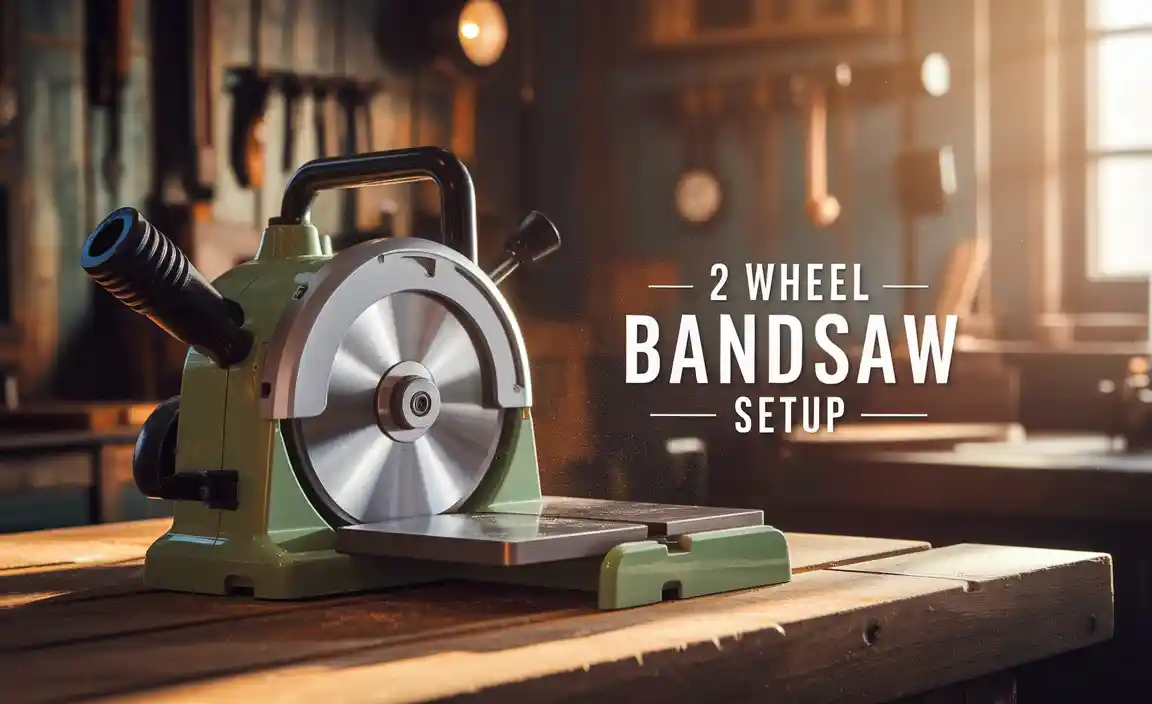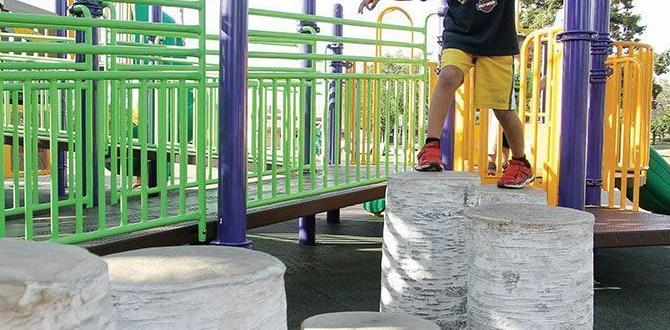Quick Summary: Learn how to use a finish nailer for cabinetry with these genius tips! Achieve clean, strong joints and professional-looking results with simple techniques for accurate nailing, proper depth setting, and avoiding common mistakes. Equip yourself with practical advice for perfect cabinet projects.
Hey there, DIYers and aspiring woodworkers! Jack Shaffer here from Nailerguy. Ever looked at beautifully crafted cabinets and wondered how they got those perfectly flush joints and clean finishes? Often, the secret weapon is a finish nailer. But if you’re new to using one for cabinetry, it can feel a bit daunting. You might worry about over-penetrating the wood, leaving unsightly holes, or ending up with wobbly connections. Don’t you fret! This guide is here to walk you through everything you need to know.
We’ll break down the process into easy steps, share some smart tips from experienced woodworkers, and help you gain the confidence to tackle your next cabinet project. Get ready to nail it!
Table of Contents
Why a Finish Nailer is Your Cabinetry Best Friend
A finish nailer is essentially a power tool that drives thin, small-headed nails into wood. Unlike framing nailers designed for heavy-duty construction, finish nailers shoot nails that are less noticeable and cause minimal damage to the surface of your wood. This makes them absolutely ideal for delicate tasks like assembling cabinets, trim work, and other fine woodworking projects where aesthetics matter.
Think about it: you’re building something where every line, every joint, and every surface will be on display. You need a tool that can hold pieces together securely without marring the wood or requiring extensive filling and sanding afterward. That’s precisely where the finish nailer shines.
Choosing the Right Finish Nailer for Cabinetry
Before we dive into the “how-to,” let’s briefly touch on selecting the right tool. For cabinetry, you’ll typically want to consider a few key types:
- Pneumatic Finish Nailers: These are the most common and offer excellent power and reliability. They require an air compressor. They are often favored by professionals for their performance.
- Cordless Electric Finish Nailers (Battery-Powered): These offer great portability and convenience, eliminating the need for an air hose. Battery technology has improved significantly, making them a strong contender for DIYers.
- Cordless Electric Finish Nailers (Corded Electric): Less common for finish nailing, but they exist. They plug into an outlet, offering consistent power without batteries but limiting mobility.
For cabinetry, a 16-gauge or 18-gauge finish nailer is usually the sweet spot. 16-gauge nails (often called “finish nails”) offer a bit more holding power, while 18-gauge nails (“brad nails”) are even smaller and leave a more diminutive hole, perfect for thinner materials or when a truly invisible fastener is desired. For sturdy cabinet construction, a 16-gauge is often preferred.
Essential Tools and Materials for Cabinetry Nailing
Here’s a quick rundown of what you’ll need besides your finish nailer:
- Your Finish Nailer: (16-gauge is a great starting point for cabinets)
- Compressor and Air Hose (if using pneumatic): Ensure your compressor can provide consistent pressure.
- Nails: Make sure they are the correct gauge and length for your wood thickness. For cabinet boxes, 1 ½” to 2” nails are common. For thinner cabinet doors or face frames, you might use 1 ¼” nails.
- Safety Glasses: Absolutely non-negotiable! Eye protection is vital when operating any power tool.
- Hearing Protection: Nailers can be loud. Protect your ears.
- Wood Glue: For strong, durable joints. Nailing alone is often not enough for long-term cabinet stability.
- Clamps: To hold pieces securely while you nail.
- Workbench or Stable Surface: To support your workpieces.
- Measuring Tape and Pencil: For accurate layout.
- Optional: Brad Nailer (18-gauge): Useful for very delicate trim or attaching thin veneer.
Step-by-Step: How to Use a Finish Nailer for Cabinetry
Let’s get down to business! Follow these steps for successful cabinetry nailing:
- Safety First!
Before you do anything, put on your safety glasses and hearing protection. Ensure your workspace is clear and well-lit. Never point the nailer at yourself or anyone else. Treat it with respect.
- Prepare Your Air Compressor (if applicable):
For pneumatic nailers, connect the air hose securely. Set your compressor to the manufacturer’s recommended operating pressure for your specific nailer. This is usually in the nailer’s manual, but a common range is 70-100 PSI. Too little pressure, and nails won’t drive fully; too much, and you risk damaging the wood. Check the Occupational Safety and Health Administration (OSHA) resources on tool safety for general guidelines.
- Load the Nails:
Open the nail magazine on your finish nailer. Slide in the correct size and gauge of nails. Make sure they are seated properly and aligned with the driver mechanism. Close the magazine until it latches securely.
- Test Fire on Scrap Wood:
This is a CRITICAL step! Before you touch your actual cabinet parts, grab a scrap piece of the same wood you’re using. Set your nailer against the scrap and pull the trigger. Observe how the nail drives. Does it sink too deep? Does it stand proud of the surface? Adjust the depth setting on your nailer as needed. Most nailers have a dial or lever for this. You want the nail head to be slightly below the wood surface, but not so deep that it breaks through the other side or creates a large divot.
- Apply Wood Glue:
Wood glue is your best friend for strong cabinet joints. Apply a thin, even bead of wood glue to the mating surfaces of the two pieces you are joining. Don’t overdo it, as excess glue can be messy. A little goes a long way, and it significantly increases the lifespan and strength of your cabinet.
- Position Your Workpiece:
Bring the two pieces of wood together as you intend them to be joined. Use clamps to hold them firmly in place. This is essential for keeping the joint tight and preventing movement while you nail.
- Position the Nailer:
Place the tip of the nailer firmly against the surface of the wood. Ensure the safety contact tip (the part that depresses slightly before firing) is resting flat against the wood. This safety feature prevents accidental firing.
- Drive the Nail(s):
With the nailer positioned and the workpiece clamped, firmly pull the trigger. The nail will be driven into the wood. For structural connections, you’ll typically place nails strategically along the joint. Space them out evenly, usually a few inches apart.
- Nail Placement for Cabinetry:
This is where the “genius tips” really come into play:
- Angle and Direction: For joining cabinet sides to shelves or cabinet backs, drive nails at a slight angle (around 30-45 degrees) into the joining piece. This helps provide better holding power. For example, when attaching a cabinet side to a shelf, nail down through the side into the edge of the shelf.
- Avoid Edges: Be careful not to drive nails too close to the edge of the wood, as this can cause it to split. Aim for nails to be at least ¾” to 1” away from the edge of the piece you’re nailing into.
- Blind Nailing: For a cleaner look on visible surfaces, “blind nailing” is an art. This involves driving nails at an angle through a joint from an inconspicuous location. For instance, when attaching a face frame to a cabinet box, you might drive nails at an upward or downward angle through the inside of the cabinet box into the back of the face frame.
- Nail Length Selection: A good rule of thumb for holding power is that about 2/3 of the nail’s length should penetrate the receiving piece. So, if you’re nailing a 1/2″ thick piece to a 3/4″ thick piece, and you want the nail to go 3/4″ into the receiving piece, you’d use a nail of roughly 1 1/4″ total length (1/2″ in the first board + 3/4″ in the second = 1 1/4″ total penetration). For cabinet construction, ensure your nails are long enough to secure both pieces but not so long they poke through the other side. A 1 ½-inch nail is often a good compromise for joining common ¾-inch cabinet plywood or lumber.
- Double Up for Strength: For critical structural joints, especially on cabinet carcasses, consider using two nails side-by-side with a small gap between them. This further reinforces the connection.
- Check for Splitting and Adjust:
If you notice the wood splitting, you might be using nails that are too thick, driving them too close to the edge, or your tool’s pressure is too high. Try backing off the pressure slightly or using thinner nails if available. As mentioned, always test fire first!
- Clean Up Glue Squeeze-Out:
Wipe away any excess wood glue that squeezed out of the joint while it’s still wet. A damp cloth works well. Trying to remove dried glue is much harder and can affect the finish.
- Repeat for All Joints:
Continue this process for all the cabinet joints that require nailing. Work methodically, ensuring each piece is clamped securely before driving nails.
Mastering Nail Depth and Power Settings
Getting the nail depth just right is crucial for professional-looking cabinetry. Too deep, and you create an unsightly dimple that requires filling. Too shallow, and the nail won’t be secure, and the head will be visible.
Most finish nailers have an adjustable depth setting. This is often a dial or a lever located near the nose of the tool. Experimenting on scrap wood is the only way to find the perfect setting for your specific nailer, air pressure, and wood type.
Here’s a general guide:
| Issue | Likely Cause | Solution |
|---|---|---|
| Nails sink too deep (dimple) | Depth adjustment set too high; Air pressure too high | Lower the nailer’s depth setting; Reduce air pressure |
| Nails don’t sink enough (head proud) | Depth adjustment set too low; Air pressure too low; Wrong nail gauge | Increase the nailer’s depth setting; Increase air pressure; Ensure you’re using the correct gauge nails for your tool |
| Wood splitting | Nail too close to the edge; Nail gauge too large; Air pressure too high; Dry wood | Move nail further from the edge; Use a thinner gauge nail (if compatible); Reduce air pressure; Ensure wood is adequately conditioned |
Remember that different wood species have varying densities. Harder woods might require slightly higher air pressure or a finer depth setting than softer woods. Always test, test, test!
Genius Tips for Flawless Cabinetry Nailing
Here are some pro-level tricks to elevate your cabinetry finishing:
- Use the Right Nail Size: This can’t be stressed enough. For ¾” plywood cabinet construction, 1 ½” to 1 ¾” 16-gauge nails are excellent. For attaching thinner cabinet doors or drawer fronts, 1 ¼” 18-gauge brad nails might be better to avoid blow-out. Always check your wood thickness and desired penetration. The Wood Magazine has great resources on fastener types.
- The Glue-Nail Method: Always pair your nails with wood glue. Nails provide immediate clamping force while the glue cures, creating a bond that is far stronger than nails alone.
- Strategic Nail Placement: For cabinet boxes (carcasses), think about structural integrity. Nail through the sides into the front and back panels, and drive fasteners into shelves and drawer runners. For face frames, nail from the back into the frame pieces.
- “Bump Firing” vs. “Sequential Firing”: Most finish nailers have selectable modes. “Sequential firing” requires you to press the safety contact tip and then pull the trigger for each nail. This offers precision but is slower. “Bump firing” allows you to hold the trigger down and rapidly fire nails by just pressing the contact tip against the wood. For cabinetry where precise placement is key, sequential firing is generally safer and recommended. However, in less visible areas or for rapid assembly of jigs, bump firing can be faster.
- Recessing the Nail Head: If a nail sinks a hair too deep, don’t panic. A nail set and a hammer can gently tap the nail head just below the surface. For very slight dimples, you might be able to use the tip of your nailer (carefully!) to push it in just a millimeter further. Practice this on scrap first.
- Dealing with Difficult Woods: For very hard woods, you might encounter nails that don’t drive fully. Slightly increasing air pressure (while staying within the tool’s limits) or using slightly longer/thinner nails can help. Some professionals even pre-drill tiny pilot holes in extremely dense hardwoods to prevent splitting, though this is often more for finishing nails used in trim than in cabinet box construction.
- Cleanliness is Key: Keep the nose of your nailer clean. Wipe away sawdust and debris regularly to ensure the safety contact tip can move freely and the nailer fires cleanly.
Common Mistakes to Avoid
Even with the best intentions, some common slip-ups can happen:
- Forgetting to Test Fire: This is the #1 mistake. Always test on scrap from the same material to dial in your depth and pressure settings.
- Nailing Too Close to Edges: This nearly guarantees wood splitting. Maintain a safe distance from the edge (at least ¾”).
- Ignoring Wood Glue: Relying solely on nails for cabinet construction is a recipe for failure over time. Glue provides the lasting strength.
- Using the Wrong Nail Size/Gauge: Too short, and it won’t hold. Too long, and it punches through. Too thick (gauge), and it risks splitting.
- Not Clamping Securely: Workpieces can shift as you nail, leading to misaligned joints and weak connections. Clamp them tight!
- Pushing Too Hard or at an Angle: While a slight angle can aid fastening, forcing the nailer or at an extreme angle can damage the tool or the wood. Maintain a firm, square (or intentional angled) placement.
FAQ: Your Finish Nailer for Cabinetry Questions Answered
Q1: What is the best nail gauge for cabinetry?
A1: For most cabinet construction (like joining plywood panels or assembling frames), a 16-gauge finish nailer is ideal. It provides good holding power without being overly large. For very delicate work, like attaching thin mouldings or veneer, an 18-gauge brad nailer might be preferred.
Q2: How deep should finish nails be driven into cabinet wood?
A2: You want the nail head to be slightly countersunk (about 1/32nd to 1/16th of an inch below the surface of the wood). This allows for a small amount of wood filler or putty to cover the nail head without a noticeable dome or divot. Always test on scrap wood first to find the perfect depth setting.
Q3: Do I really need to use wood glue with a finish nailer for cabinets?
A3: Absolutely! The finish nailer provides immediate holding power to keep the joint tight while the glue dries. The wood glue creates a structural bond that is significantly stronger and more durable than nails alone. Don’t skip the glue!
Q4: What if my finish nailer is splitting the wood?
A4: This usually happens when nails are driven too close to the edge, or the air pressure/depth setting is too high. Try moving the nail further from the edge. If that doesn’t work, reduce the air pressure slightly or adjust the depth setting to be less aggressive. Sometimes, a softer wood species might be more prone to splitting.




